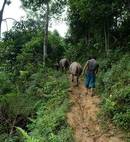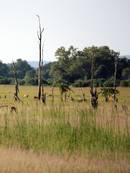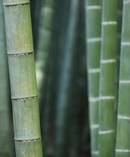Nouvelles

Situated in the heart of Central America and surrounded by high tropical mountains, Honduras has it all – rainforests, cloud forests, mangroves, dry forest and mountain ranges with pine and oak trees. According to FAO’s Global Forest Resources Assessment 2015, forests cover 41% of the country. Dedicated to protecting its diverse forested landscapes from the harsh effects of climate change, Honduras became a pioneer in the development of forest inventories and it stands ready to share its lessons learned with other countries in Central America.
What is the National Forest Inventory?
The National Forest Inventory (NFI) is a systematic collection of data...

Monitoring forest and land cover changes is indispensable for sustainable management of natural resources, biodiversity conservation, ecological protection and developing sustainable livelihoods, particularly for a populated country like Bangladesh. Land cover and forest monitoring activities are part of the Bangladesh Forest Inventory (BFI) carried out by the Bangladesh Forest Department (BFD). The BFI provides information for international reporting and contributes to the achievements of national targets such as Sustainable Development Goal 15 – Life on Land.
With the aim of assessing changes of land cover, forest and other natural resources over time, the BFD with the technical support of Food...

Since its inception in 2008, the UN-REDD Programme has supported inclusive, gender-equitable policy formulation and decision making for national and sub-national REDD+ processes. This approach is based on the recognition that the people who live within or in close proximity to forests, and whose livelihoods depend directly on forests, are best positioned to protect and sustainably manage them. Their perspectives and proposals deserve primary consideration. To underpin this approach, the UN-REDD Programme has integrated representatives from indigenous communities and civil society into its national programmes and processes, ensuring their full and effective participation.
More concretely, the Programme has pioneered rights instruments,...

Forests in Zambia cover about 60% of the total land area and are crucial in supporting low-income communities in both urban and rural areas. A variety of wood and non-wood forest products are utilised on a daily basis by rural and urban households in various parts of the country. The Government of Zambia is advancing in activities aimed at reducing emissions from deforestation and forest degradation (REDD+). This is an opportunity for them to directly address the drivers of deforestation and forest degradation while pursuing its long-term development vision to reduce poverty and develop participatory forestry by 2030. According to Vision...

Historically, bamboo has played a key role in the lives of many people in tropical countries around the world. Considering that bamboo is one of the fastest growing plants in the world, with many uses, its booming global popularity comes as no surprise. According to the International Network for Bamboo and Rattan (INBAR), Ethiopia has two-thirds of all bamboo found in Africa. From traditional handmade, woven baskets to furniture shops, the Ethiopian bamboo industry has the potential to contribute to Ethiopia’s ambition of becoming a middle-income country in the next ten years. However, given the increasing degradation of bamboo caused by...

